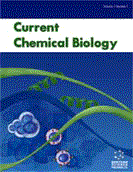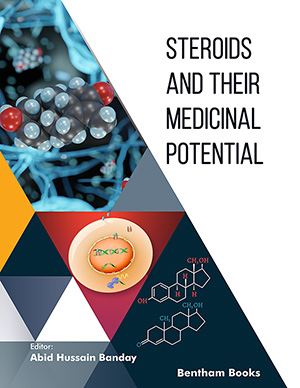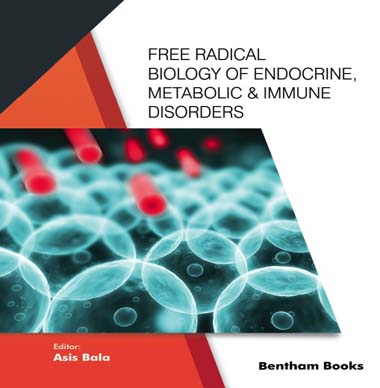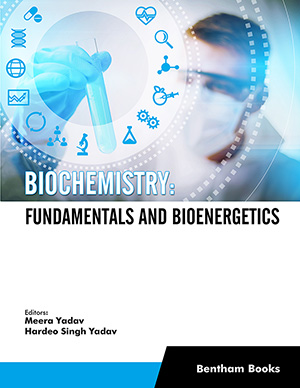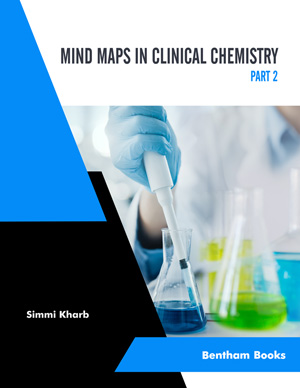Abstract
Background: Hepatocellular Carcinoma (HCC) is the fifth most frequent cancer worldwide with a low overall survival due to high metastasis and recurrence rates. The aim of this study is to assess and compare the possible anti-neoplastic effect of capsaicin and nanoformulated capsaicin on in vitro HCC human cell line HepG2. The source of the cell line, including when and from where it was obtained. Whether the cell line has recently been authenticated and by what method. Whether the cell line has recently been tested for mycoplasma contamination.
Materials and Methods: Capsaicin-loaded Trimethyl Chitosan Nanoparticles (CL TMCS NPs) were synthesized by ionotropic gelation of cationic TMCS with capsaicin. The synthesized nanoparticles were characterized through TEM, and zeta analyzer. Human hepatocarcinoma HepG2 cell lines were cultured and treated with 50, 75 & 100 μM of Capsaicin (CAP), plain TMCS NPs and CL-NPs as well as ethanol (control) for 24h and 48h. The induced effects were investigated by flow cytometry, immunocytochemistry assay for Bcl-2, Bax, and caspase proteins and evaluating gene expression levels of Bcl-2, Bax, and MDR-1 mRNA by real-time PCR.
Results: Our results demonstrated that capsaicin- loaded NPs had the potential to significantly increase capsaicin bioactivity compared with the plain capsaicin formulation either in inducing apoptosis through altering expression of apoptotic regulators or modifying MDR-1 expression.
Conclusions: TMCs nanoparticles investigated in this study may be a good drug delivery vehicle for capsaicin. Application of capsaicin-loaded NPs in HCC management as an adjunct therapeutic approach may be a novel strategy to improve the treatment efficacy and resistance of the conventionally used chemotherapy.
Keywords: Hepatocellular carcinoma, capsaicin, trimethyl chitosan nanoparticles, anticarcinogenic, fetal bovine serum, transient receptor potential vanilloid 1.
[http://dx.doi.org/10.1093/acprof:oso/9780195311174.001.0001]
[http://dx.doi.org/10.1002/1097-0142(19890301)63:5<935::AID-CNCR2820630525>3.0.CO;2-9] [PMID: 2914299]
[http://dx.doi.org/10.1126/science.aan5931] [PMID: 29798856]
[http://dx.doi.org/10.1007/s10620-012-2136-1] [PMID: 22451120]
[http://dx.doi.org/10.1111/liv.12713] [PMID: 25529098]
[http://dx.doi.org/10.1007/s13197-015-1935-8] [PMID: 26604381]
[http://dx.doi.org/10.3390/molecules21080931] [PMID: 27472308]
[http://dx.doi.org/10.1128/mBio.00470-17] [PMID: 28536285]
[http://dx.doi.org/10.1038/aps.2017.156] [PMID: 29188798]
[http://dx.doi.org/10.18632/oncotarget.10775] [PMID: 27458171]
[http://dx.doi.org/10.1371/journal.pone.0179950] [PMID: 28640864]
[http://dx.doi.org/10.3892/ijo.19.5.929] [PMID: 11604990]
[http://dx.doi.org/10.1196/annals.1397.053] [PMID: 17404062]
[http://dx.doi.org/10.3390/ijms18071343] [PMID: 28644386]
[http://dx.doi.org/10.1016/j.mrfmmm.2006.06.015] [PMID: 16942782]
[PMID: 19331147]
[http://dx.doi.org/10.3109/10715762.2016.1173689] [PMID: 27043357]
[http://dx.doi.org/10.1089/cbr.2017.2186] [PMID: 28598691]
[http://dx.doi.org/10.18632/oncotarget.4911] [PMID: 26338963]
[http://dx.doi.org/10.2147/BCTT.S121610] [PMID: 28008282]
[http://dx.doi.org/10.1007/s10495-007-0119-z] [PMID: 17828457]
[http://dx.doi.org/10.1038/onc.2010.303] [PMID: 20711237]
[http://dx.doi.org/10.1002/hep.23692] [PMID: 20683952]
[http://dx.doi.org/10.1038/sj.onc.1210266] [PMID: 17297456]
[http://dx.doi.org/10.1002/1520-6017(200102)90:2<202::AID-JPS11>3.0.CO;2-E] [PMID: 11169537]
[http://dx.doi.org/10.1016/S0169-409X(98)00100-8] [PMID: 10837728]
[PMID: 24941667]
[http://dx.doi.org/10.1016/j.ejphar.2013.10.053] [PMID: 24211679]
[http://dx.doi.org/10.1016/j.biomaterials.2008.05.026] [PMID: 18556059]
[http://dx.doi.org/10.4172/2157-7439.1000240]
[http://dx.doi.org/10.1371/journal.pone.0211420] [PMID: 30695053]
[http://dx.doi.org/10.1002/cyto.a.20867] [PMID: 20131407]
[http://dx.doi.org/10.1006/meth.2001.1262] [PMID: 11846609]
[http://dx.doi.org/10.14202/vetworld.2018.402-409]
[http://dx.doi.org/10.1677/ERC-09-0262] [PMID: 19926708]
[http://dx.doi.org/10.1016/S0304-3835(01)00426-8] [PMID: 11275362]
[http://dx.doi.org/10.1007/s13277-014-2138-z] [PMID: 24870597]
[http://dx.doi.org/10.7150/ijbs.7730] [PMID: 24643130]
[http://dx.doi.org/10.1016/j.taap.2011.12.010] [PMID: 22200406]
[http://dx.doi.org/10.1158/1078-0432.CCR-06-2575] [PMID: 17505005]
[http://dx.doi.org/10.4149/neo_2013_048] [PMID: 23581408]
[http://dx.doi.org/10.1038/s41419-019-1407-6] [PMID: 30792387]
[http://dx.doi.org/10.1126/science.275.5306.1649] [PMID: 9054359]
[http://dx.doi.org/10.1016/j.ejca.2004.02.031] [PMID: 15315800]
[http://dx.doi.org/10.1038/ncb1106-1213] [PMID: 17077852]
[http://dx.doi.org/10.1093/emboj/17.6.1675] [PMID: 9501089]
[http://dx.doi.org/10.1038/35037728] [PMID: 11048730]
[http://dx.doi.org/10.1002/1439-7633(20010105)2:1<20::AID-CBIC20>3.0.CO;2-X] [PMID: 11828422]
[http://dx.doi.org/10.1126/science.275.5303.1132] [PMID: 9027315]
[http://dx.doi.org/10.1126/science.275.5303.1129] [PMID: 9027314]
[PMID: 30272354]
[http://dx.doi.org/10.3748/wjg.v10.i23.3522] [PMID: 15526378]
[http://dx.doi.org/10.1245/ASO.2005.06.004] [PMID: 15915370]
[http://dx.doi.org/10.1136/jcp.49.6.470] [PMID: 8763260]
[http://dx.doi.org/10.1002/jso.1129] [PMID: 11579388]
[http://dx.doi.org/10.1097/00042737-200403000-00005] [PMID: 15195890]
[http://dx.doi.org/10.1111/j.1478-3231.2008.01889.x] [PMID: 19055643]
[http://dx.doi.org/10.1016/0092-8674(86)90595-7] [PMID: 2876781]
[http://dx.doi.org/10.1038/nrc706] [PMID: 11902585]
[http://dx.doi.org/10.1038/sj.onc.1206951] [PMID: 14576855]
[PMID: 15141021]
[PMID: 14981903]
[http://dx.doi.org/10.1053/jhep.2002.35619] [PMID: 12297834]
[http://dx.doi.org/10.1002/app.21698]
[http://dx.doi.org/10.1097/01.ju.0000102360.11785.d7] [PMID: 14665960]
[http://dx.doi.org/10.1016/j.colsurfb.2011.05.041] [PMID: 21684725]
[http://dx.doi.org/10.2174/1381612823666170301123504] [PMID: 28260513]
[http://dx.doi.org/10.2147/IJN.S108143] [PMID: 27486323]
[http://dx.doi.org/10.1080/1061186X.2018.1564923] [PMID: 30596291]
[http://dx.doi.org/10.3389/fonc.2018.00404] [PMID: 30319969]
[http://dx.doi.org/10.1208/s12249-016-0644-6] [PMID: 27796908]
[http://dx.doi.org/10.1111/jphp.12593] [PMID: 27350211]
[http://dx.doi.org/10.1016/j.ijbiomac.2016.08.050] [PMID: 27565296]
[http://dx.doi.org/10.1016/j.bbagen.2014.06.004] [PMID: 24946270]


